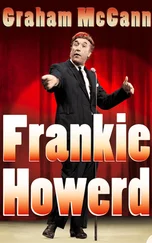He was grateful for the exposure afforded him by his association with West – who was among the top ten box-office attractions in the country at that time – but he became increasingly resentful of the shameless way in which she sought to take all of the credit for his stardom: ‘She always got a great deal of publicity for herself … I could never understand the woman. I thought she was brilliant with that one character she portrayed, but she was an absolute fake as a person. You would shudder from it.’ 32 At the time, however, Grant – who thought more than most about the technique behind a performance – was well aware of what an excellent teacher in the art of screen comedy West was: ‘She knows so much … Her instinct is so true, her timing so perfect, her grasp of the situation so right. It’s the tempo of the acting that counts rather than the sincerity of the characterisation. Her personality is so dominant that everyone with her becomes just a feeder.’ 33 One of the most impressive qualities of the young Cary Grant was this capacity for quiet observation; he never missed an opportunity to learn from performers more experienced, and more skilled, than himself, and he learned much of immense value from his working experience with Mae West.
Grant was now in the process of becoming something of a Hollywood celebrity. He inherited the dressing-room formerly occupied by George Bancroft, a star of silent movies who had recently been demoted to the ranks of supporting players. Paramount’s most illustrious top dozen stars were quartered side by side in implied order of importance. Mae West had taken possession of dressing-room number 1, followed by the other leading women: Claudette Colbert, Marlene Dietrich, Sylvia Sidney, Miriam Hopkins and Carole Lombard. Then came the leading male stars: Gary Cooper, Fredric March, Bing Crosby, George Raft, Cary Grant and Charles Laughton. Grant’s personal life was also beginning to change: he became engaged in 1933 to Virginia Cherrill, who had played the blind girl in Chaplin’s City Lights , and in November he took her back to England, 34 where they were married on 9 February the following year. He was thirty years old. The marriage, however, was soon in trouble; in the spring of 1935 they separated, and Grant began a series of brief relationships with other women. 35 The couple were granted a divorce that March.
Professionally, the years 1934 and 1935 did not see Grant offered many movie roles by Paramount which provided him with much opportunity to exploit his new-found popularity. Thirty Day Princess, Born to Be Bad, Kiss and Make Up, Ladies Should Listen (all 1934) were largely forgettable affairs. After making Wings in the Dark (1935), Grant was given six months off; Paramount had a backlog of Grant movies which had yet to be released. 36 It seemed as though the studio was undecided as to how best it should utilise his talents, and his dissatisfaction with Paramount deepened: ‘They had a lot of leading men at Paramount with dark hair and a set of teeth like mine, and they couldn’t be buying stories for all of us.’ 37 In November 1935 he returned to England to make The Amazing Quest of Ernest Bliss 38 for the independent company, Garrett Klement Pictures; if he had hoped to find temporary relief away from Hollywood, he was disappointed – during the filming, his father died.
When Grant returned to Hollywood early in 1936 he was anxious to sort out his future. He feared that he was in danger of being eclipsed by some of his contemporaries, such as James Cagney (who had just reached number ten in the list of top box-office draws) and Errol Flynn (who had starred recently in the very successful Captain Blood ). It had become obvious to insiders that Grant was unhappy at Paramount. When Sylvia Scarlett , which he had made on loan at RKO the previous year, was released, the generally positive reviews of his contribution encouraged him to persevere in his struggle for more control over his career.
Grant later acknowledged Sylvia Scarlett as ‘my breakthrough’, 39 but it was, in many ways, a spectacular failure. Based on Compton Mackenzie’s picaresque novel, it starred Katharine Hepburn and was directed by George Cukor. Grant played Jimmy Monkley (‘gentleman adventurer’), a cockney con-man who teams up with Sylvia Scarlett (Hepburn) and her father (Edmund Gwenn) in various embezzlement schemes. The most unusual aspect of the movie was that the plot called for Hepburn to masquerade as a boy through most of the story. 40 Coded motifs and hidden implications abound in the script: Monkley wants to cuddle up to Sylvester ‘like a hot-water bottle’; a housemaid wants to daub a moustache on Sylvester and kiss ‘him’; and a bohemian artist is given a ‘queer feeling’ by his fascination with the boy. For a woman to appear on the screen in drag, in spite of the moralistic Production Code of the time, was a daring departure for a Hollywood movie, but the conceit was only allowed after Cukor had been ordered to add what he later described as ‘a silly, frivolous prologue, to explain why this girl was dressed like a boy, and being so good at it. We weren’t allowed to give the impression that she liked it, or that she’d done it before, or that it came naturally.’ 41
The movie proved to be both a personal watershed and a professional catastrophe for several of the people who made it. Its dismal reception set in motion Katharine Hepburn’s boycotting by the nation’s movie exhibitors as ‘box-office poison’. Hepburn’s accent flits from French to cod-cockney to Bryn Mawr, and, in her stylised boy’s clothes and principal-boy’s gestures, she appears – far from seeming unnervingly androgynous – merely epicene (an American cousin, perhaps, of the English camp comic actor Kenneth Williams). The dialogue – ‘why, then I won’t be a girl! I won’t be weak and I won’t be silly! I’ll be a boy and be rough and hard’ – did nothing to discourage her irritatingly mannered performance. At one point during the shooting of the movie, Hepburn confided in her diary: ‘This picture makes no sense at all.’ 42 It was a perceptive remark. RKO executives were furious long before Sylvia Scarlett was confirmed as the studio’s worst box-office failure of the year. The movie’s shell-shocked producer, Pandro Berman, told Hepburn and Cukor (but not Grant) that he never wanted to work with either of them ever again. 43
What was extraordinary was how Grant managed to emerge from this débâcle not merely unscathed but with an enhanced reputation. ‘That was really the beginning for Cary,’ Katharine Hepburn remembered. ‘He was the only reason to see Sylvia Scarlett . It was a terrible picture, but he was wonderful in it.’ 44 One reason why Grant was so effective in it was the fact that he was playing an Englishman, and several scenes were set in a travelling fair (performing songs like ‘The Winkle on the Boarding ’ouse Floor’). There is, indeed, more than a trace of Archie Leach in Grant’s performance. Jimmy Monkley was formed by the same society that had shaped Grant: first glimpsed in a black hat and coat on a boat crossing the English Channel, he later refers to himself sarcastically as ‘a little friend of all the world, nobody’s enemy but me own’, and more soberly as ‘a rolling stone’ who is neither a ‘sparrow’ nor an ‘’awk’. ‘Take it from me,’ he tells Scarlett, ‘it don’t do to step out of your class.’ In contrast to Archie Leach, however, Jimmy Monkley sees no way of escaping, merely surviving. ‘You have the mind of a pig,’ Scarlett tells him. ‘It’s a pig’s world,’ he replies. As Richard Schickel has suggested, the role of Jimmy Monkley offered Grant the opportunity ‘to get in touch with what was usable in his past, lay it out in public, and discover that his bright new, light new world would not collapse inward upon him, that, indeed, it was capable of vast expansion’. 45 George Cukor agreed: until then, he said, Grant had been ‘a successful young leading man who was nice-looking but had no particular identity’. 46 This movie, he added, changed that: ‘ Sylvia Scarlett was the first time Cary felt the ground under his feet as an actor. He suddenly seemed liberated. It was very exhilarating to see.’ 47 The critics were also impressed: writing in Variety , one declared that Grant ‘steals the picture’, while the Motion Picture Herald reviewer praised Grant’s performance as ‘the most convincing’ and in stark contrast to the ‘overstrained’ attempts at characterisation by his more experienced co-stars. 48
Читать дальше












